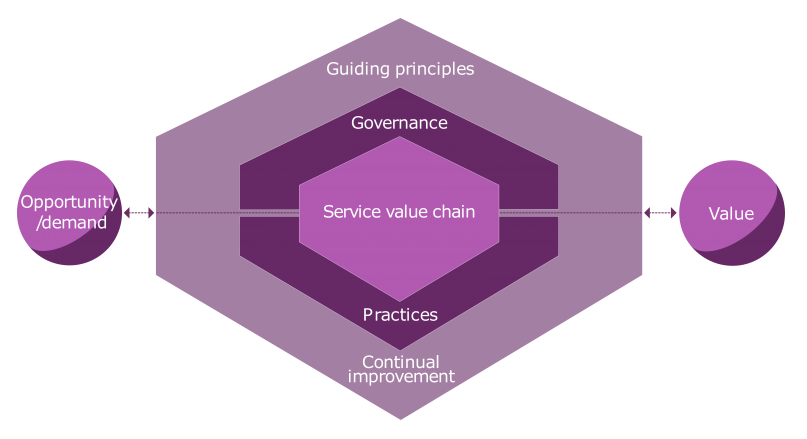ITIL 4 history, guiding principles, and best practices
History of ITIL
In the mid-1980s, the British Central Computer and Telecommunications Agency (CCTA, now known as the Office of Government Commerce or OGC) initiated a project to look at best IT practices. It created a series of white papers, and subsequently books, that described best practices for key processes required to provide IT services. This collection of documents was called the Information Technology Infrastructure Library or ITIL. In 1999-2000, the collection of white papers was turned into a series of seven books. An eighth book was later added that covered IT security.
In May 2007, the OGC completed a major update to the Information Technology Infrastructure Library (ITIL). The update became known as ITIL Version 3 (ITIL v3). The initial adoption of ITIL v3 was slow because the OGC and its partners were not able to provide the necessary support, and it represented a major shift in the well-established methodologies of ITIL v2. While still being process focused, it adopted a life-cycle approach to service management. It took the OGC and its partners until late 2009 to fully complete the rollout of ITIL v3 and its associated certifications.
One of the major differences between ITIL v2 and ITIL v3 is that ITIL v3 takes a life-cycle approach to service management. While ITIL v2 looked at service management processes as either tactical or operational (service delivery or service support), ITIL v3 looks at the service management life cycle and divides it into strategy, design, transition and operational, each with a set of processes that support the life-cycle objectives. It also adds continual service improvement to the life cycle to ensure that life-cycle stages and processes are regularly evaluated and improvements are made.
A subsequent update and refinement to ITIL was undertaken and released in 2011 and became known as ITIL 2011.

ITIL 4 Foundations participants will learn that the service value system comprises five parts that interact with each other and external stakeholders to co-create value. (Copyright AXELOS Limited 2019. All rights reserved.)
In 2013, the OGC entered into a joint venture agreement with Capita plc and formed a joint venture company called Axelos to oversee the development of ITIL. In Febrary 2019, Axelos released the latest version, ITIL 4.
ITIL 4
ITIL 4 takes a new approach to service management. Leaving behind the service life cycle of ITIL v3, ITIL 4 focuses on the service value system (SVS). ITIL 4 puts an emphasis on the business and technology world, how it works today, and how it will work in the future with Agile, DevOps and digital transformation. The key elements of ITIL 4 are the four dimensions of service managment and the service value system, which includes guiding principles, governance, the service value chain, continual improvement, and best practices. Each element helps an organization take a holistic approach to the co-creation of value through service relationships.
Four dimensions of service management
The four dimensions are similar to the 4Ps of service design in ITIL 2011 (people, process, products, and partners). They represent a holistic approach necessary for service management to create value.
The four dimensions are:
- Organizations and people
- Information and technology
- Partners and suppliers
- Value streams and processes
Service value system
The service value system (SVS) is the heart of ITIL 4. It shows how the various aspets and activities of the organization work together as a system to create value.
The SVS has five components:
- Guiding principles
- Governance
- Service value chain
- Best practices
- Continual improvement
Guiding principles
The guiding principles represent universal guides an organizations uses to support actions and decisions.
- Focus on value
- Start where you are
- Progress interatively with feedback
- Collaborate and promote visibility
- Think and work holistically
- Keep it simple and practical
- Optimze and automate
Best practices
The most basic definition of ITIL has always been a framework of best practices for service management. However, a heavy emphasis of the previous ITIL releases was on process. ITIL 4 shifts the focus to practices supported by process. The practices support the creation of value and are an integral component of the service value system.
Thirty-four practices are grouped into three categories — general management practices, service management practices, and technical management practices. The practices support the activities of the service value chain and represent organizational resources and capabilities designed to accomplish specific types of work.
| General | Service management | Technical |
|
|
|
